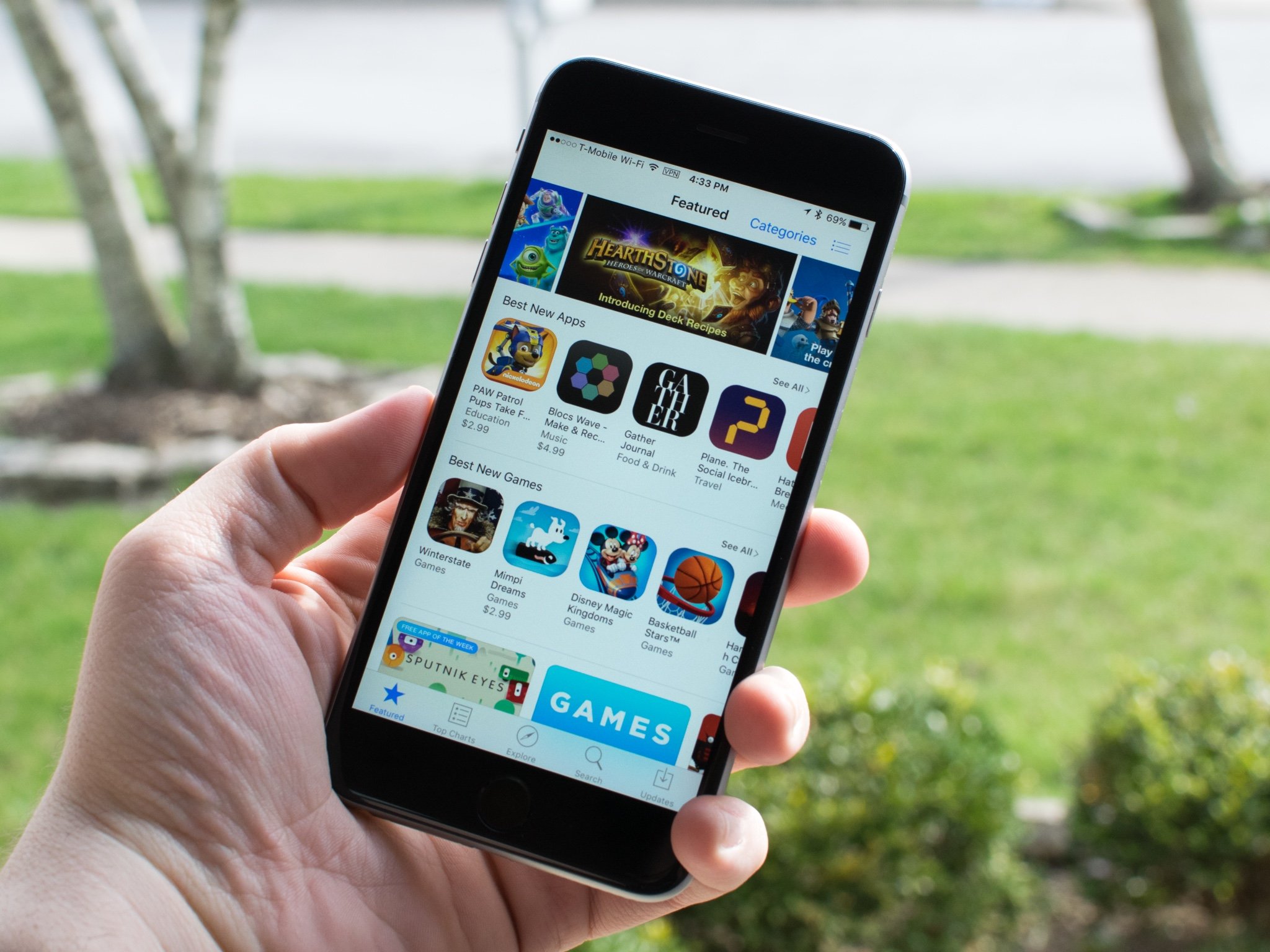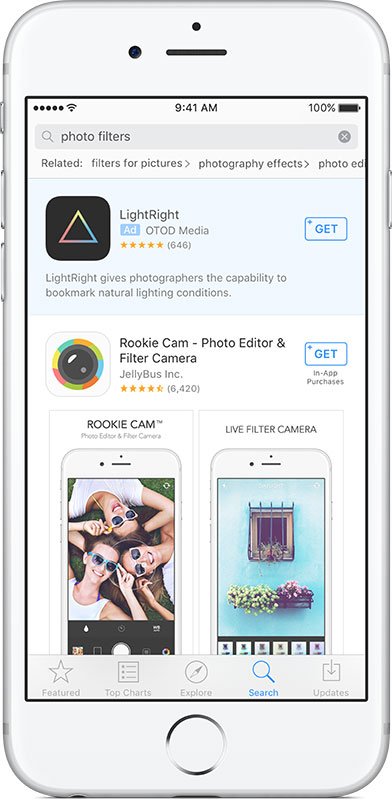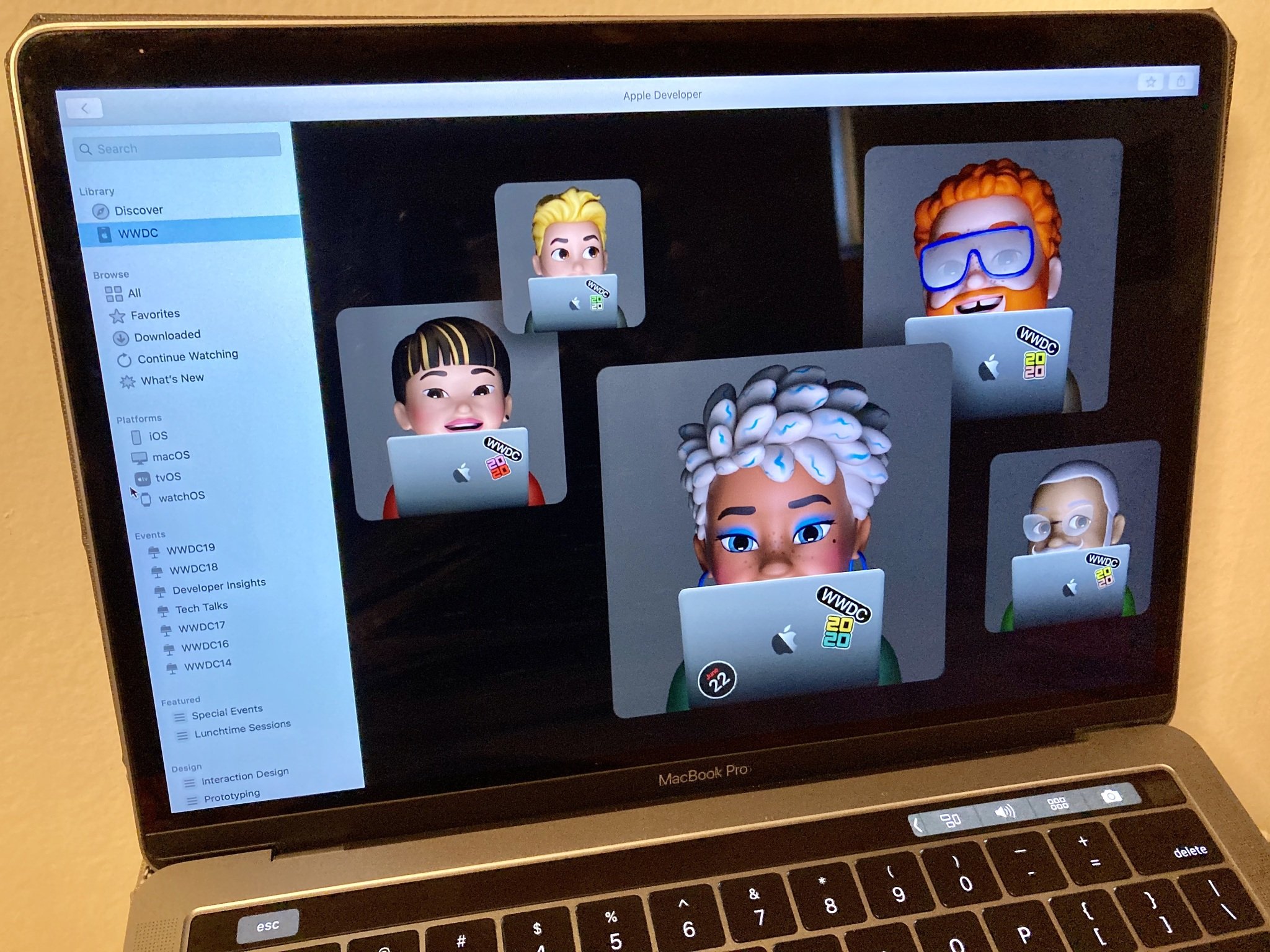App Store FAQ: What developers and customers need to know!

Apple doesn't focus App Store updates around WWDC any more. We saw many changes happen right before the annual conference this year, and we've now seen additional changes follow in the fall. With App Stores in over 155 counties, including over two-million apps in 25 categories, and around 100,000 new and updated apps submitted each week, it's more important than ever for Apple to stay agile and adjust as and when needed. Here's the latest!
Note: Updated September 28, 2016.
When are search ads going to be available to developers?
Starting today, September 28, 2016!
Where can I find more info on search ads?
Right here: https://searchads.apple.com
So, Apple's going to purge abandoned apps from the App Store?
Kinda. Here's what Apple has to say about apps that have been abandoned or have otherwise failed to update with the times:
Quality is extremely important to us. We know that many of you work hard to build innovative apps and update your apps on the App Store with new content and features. However, there are also apps on the App Store that no longer function as intended or follow current review guidelines, and others which have not been supported with compatibility updates for a long time. We are implementing an ongoing process of evaluating apps for these issues, notifying their developers, and removing problematic and abandoned apps from the App Store.
Abandonware clogs up the App Store, making it harder for customers to find apps in general, and find the best apps for the needs in specific. If an app hasn't been updated for Retina, for 16:9, for the new big and bigger iPhone size classes, and most importantly, for ongoing bug fixes and adoption of newer, better frameworks, it shouldn't be on the App Store, any more than a derelict brick and mortar should remain in the mall.
Hopefully Apple goes after the thin web wrappers next...
Master your iPhone in minutes
iMore offers spot-on advice and guidance from our team of experts, with decades of Apple device experience to lean on. Learn more with iMore!
Also, buh-bye SEO scam names?
Also kinda. From Apple:
Search is one of the most frequently used methods for customers to discover and download apps from the App Store. In hopes of influencing search results, some developers have used extremely long app names which include descriptions and terms not directly related to their app. These long names are not fully displayed on the App Store and provide no user value. App names you submit in iTunes Connect for new apps and updates will now be limited to no longer than 50 characters. You can learn more about creating effective app names, as well as icons, keywords, screenshots, and descriptions, by reading the App Store Product Page.
In other words, be succinct, and don't be a scammer.
Brilliant, but why did this take so long?
There's no excuse. People inside and outside of Apple have been begging for these changes for a long, long time. Previously, though, the App Store was in a multi-legged race, careening down a hill at a million dollars an hour. And that makes it hard to adjust without tripping and falling.
Now, since the last re-org, the App Store is still racing, but it's a far more focused race. That's the advantage of having one name on the door, and one person who's job it is to make the App Store an amazing product.
So, call me optimistic.
Note: Updated June 8, 2016.
Has App Review really gotten faster?
Yes! It's not just a beautiful dream! App review has gotten much faster. About half of all reviews are now being completed within a day, and 90% within two days. That's a huge improvement from the previous 7-10 day waiting period.
What do faster App Review times mean for customers?
Developers can iterate faster and not hesitate simply to avoid getting stuck in review. They can also fix bugs faster, which is better for everyone.
How did Apple improve review times and why did it take so long?
Good questions. Apple's internal tools have gotten better, which automates all the heavy-lifting and, as of a month or so ago, they reorganized the review team to smooth out some long-standing problem areas. The rest sounds like "policy changes", which means the will to do it.
Since Phil Schiller, Senior Vice President of world wide product marketing, is now in solely in charge of the App Store, the power and responsibility to get things like that done are his. And he's pushing it through.
What's new with Subscriptions on the App Store?
A lot! Previously, subscriptions were only available for streaming media (think Netflix or Spotify), cloud services (Dropbox or Office), news (New York Times), and dating apps (Match.com). Now, they're available to all apps in all categories.
Most interestingly, after the traditional 70/30 split in the first year of subscriptions, Apple will only be asking for 85/15 for subsequent years.
Wait, stop, is this the end of Apple's 70/30 split?
No. It's unique to subscriptions and only kicks in after the first year. So, if Apple's huge customer base helps get a subscription, Apple still gets its usual cut. After that, it drops down to 85/15 — which is what some big subscription services like Netflix have been reportedly getting for a while already.
How much will subscriptions cost?
Whatever developers set them to. What's more, territory-specific pricing will be available, with 200 price-points across the board (up from the previous 87). That way, developers can properly price for each market, and have the flexibility needed to adapt (for example, if competing services or other platforms change prices).
How will price changes be handled?
Well, first, prices can be maintained for existing subscribers, even if they're increased for new subscribers. So there's an option to keep existing, loyal customers on lower price plans for longer.
If and when a price increase does happen, a push notification will alert customers and the customer can choose to accept the price change or cancel the subscription. If customers don't respond, the subscription will end automatically to prevent negative surprises.
In other words, increases are opt-in, not opt-out.
Customers will also be able to easily manage subscriptions and developers will be able to offer upgrades, cross-grades, or downgrades for customers who want to change their subscriptions.
Wait, stop again. Upgrade pricing?!
Only for subscriptions. For example, if you go from a single to family plan, or a lower to higher level of service. This doesn't change anything when it comes to apps going from version 1 to version 2. At least, no word yet.
Here's the big BUT: But, it might be possible for developers to figure out a subscription model that lets them, for example, charge periodically for a Twitter client or to-do list or another kind of app. It remains to be seen what that experience would be like for the customer, though. (What happens if you don't renew? Do you have to stop using it? Would you be able to get your data out? Lots of unknowns!)
Is app discovery improving?
In several ways. The App Store used to get a major refresh every Thursday. Now that's happening more frequently, so more apps can be featured more often.
So I'll need to check more often?
More like, however often you check, there's a better chance you'll see new and interesting apps and games.
Later this fall, Apple will also start filtering out apps you already have, so new apps are easier to spot, and sharing will become faster thanks to 3D Touch.
3D Touch? Tell me more!
You'll be able to 3D Touch on an app on your Home screen and instantly share it with a friend. Warp speed!
Okay. Gently now — Search ads...?
Yeah. Deep breath. The simple truth is this: If you've used Google, you've gotten search ads. It's something that, historically, has worked well both for platforms and ad buyers. A lot of how this turns out, though, will depend on how Apple implements them.
How will search ads work?

Search ads will show up when you search for an app or game in the App Store. They'll be labeled as ads with a blue background and an "Ad" icon, so they shouldn't be mistaken for organic App Store search results.
Apple will also make sure that what we see in the ad is what we get in the app. So, if you're searching for a Lego game, you should never see an ad for a calculator app.
But developers with deep pockets can buy their way to the top?
Hopefully not. Apple is prioritizing relevancy, not ad spend. So, the best app for you should always show up, not the app where the developer spent the most on advertising.
We'll have to see how that works in the real world. Apple will likely tweak to make sure it doesn't get gamed or abused, and that the best experience is achieved.
Should I worry about app search? Is Apple becoming Google?
Apple has offered some forms of advertising for years, going back to when Steve Jobs introduced iAd. All app search ads will have to adhere to Apple's privacy and security policies, and no ads will be shown to accounts where the owner is 13 and under. So, your data stays your data. Developers, hopefully, will just have an additional way to reach you.
When do search ads start?
The ad search program starts in beta in the U.S. this Monday and should broaden this fall.
Developers can find more information at https://developer.apple.com/app-store/search-ads/{.nofollow}.
Anything else?
I'll keep updating as more (and better) information becomes available. If you have questions, drop them in the comments below!

○ Everything about WWDC 2020
○ WWDC 2020 remote lineup
○ Download the Apple Developer app
○ iOS/iPadOS 14
○ macOS 10.16
○ watchOS 7
○ tvOS 14
○ Discussion forums

Rene Ritchie is one of the most respected Apple analysts in the business, reaching a combined audience of over 40 million readers a month. His YouTube channel, Vector, has over 90 thousand subscribers and 14 million views and his podcasts, including Debug, have been downloaded over 20 million times. He also regularly co-hosts MacBreak Weekly for the TWiT network and co-hosted CES Live! and Talk Mobile. Based in Montreal, Rene is a former director of product marketing, web developer, and graphic designer. He's authored several books and appeared on numerous television and radio segments to discuss Apple and the technology industry. When not working, he likes to cook, grapple, and spend time with his friends and family.
